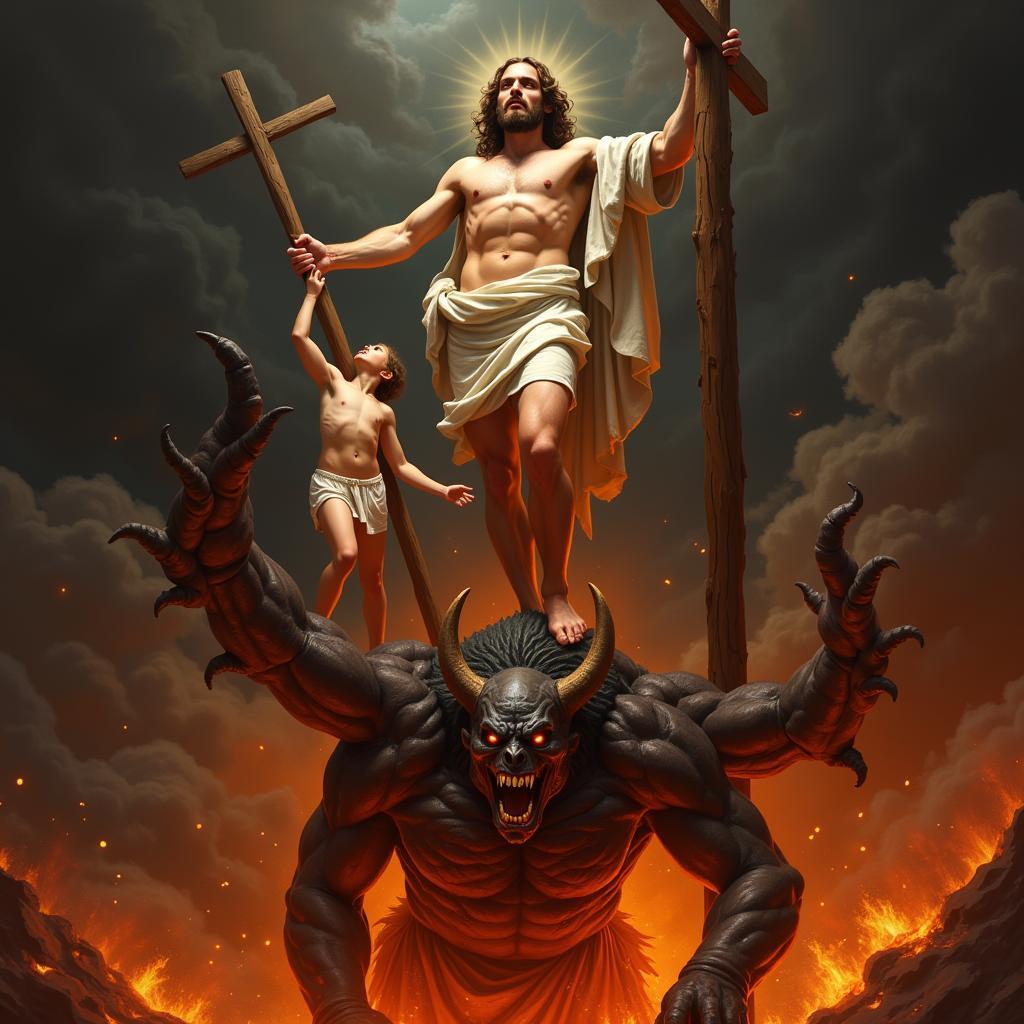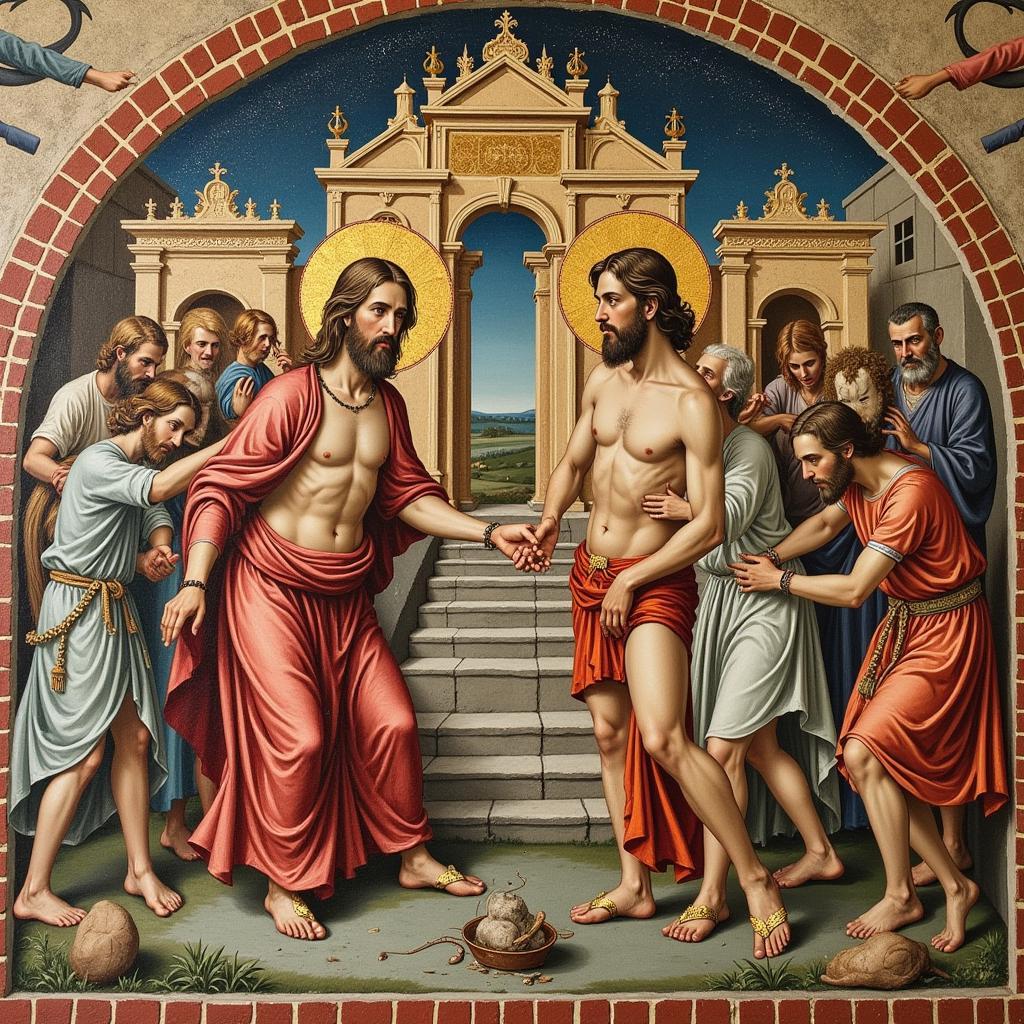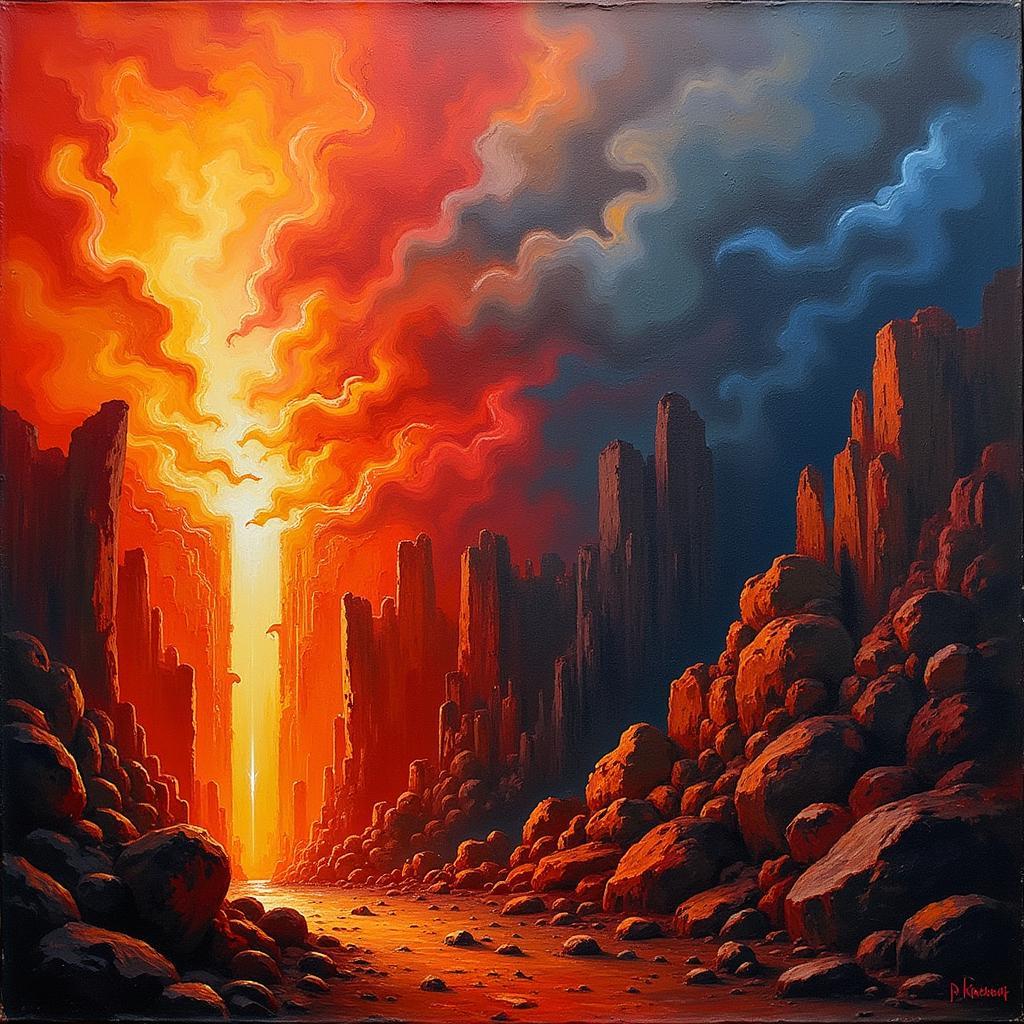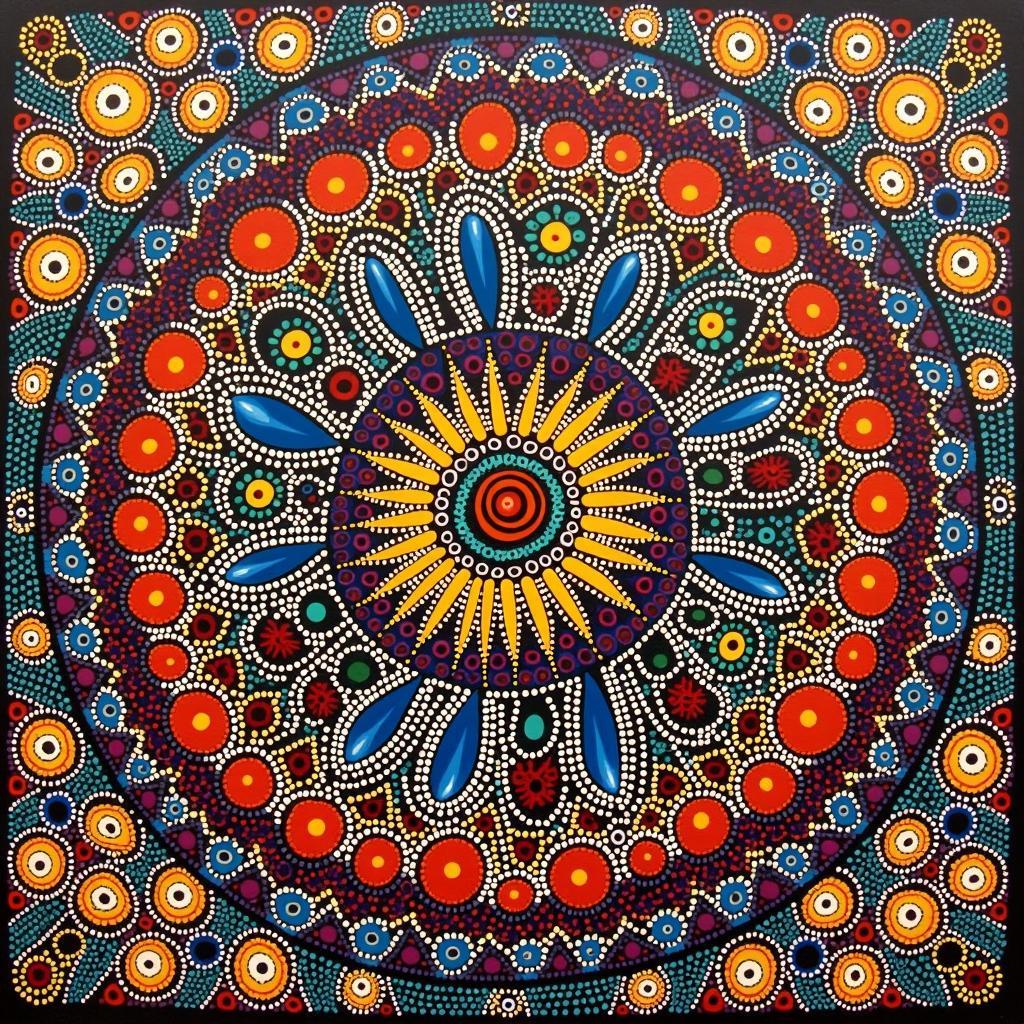Harrowing of Hell Art: A Descent into Depictions of Redemption
The Harrowing Of Hell Art, a powerful and evocative subject in Christian tradition, offers a visual journey into the depths of hell and the triumphant resurrection of Christ. These artistic interpretations, often found in illuminated manuscripts, paintings, and sculptures, depict Christ’s descent into hell after his crucifixion to liberate the righteous souls held captive since the beginning of time. This exploration of the harrowing of hell art delves into its symbolism, historical context, and the variations in its visual representation across different artistic movements.
Unveiling the Depths: Symbolism in Harrowing of Hell Art
 Christ Trampling Satan in Harrowing of Hell Art
Christ Trampling Satan in Harrowing of Hell Art
Harrowing of hell art, rich in symbolism, provides a window into the theological interpretations of Christ’s triumph over death. The imagery often depicts Christ breaking down the gates of hell, a visual metaphor for his victory over sin and death. The righteous, often depicted as figures from the Old Testament, are shown being led out of the fiery abyss by Christ, symbolizing their redemption.
A Visual Tapestry Across Time: Historical Context and Artistic Evolution
From the early medieval period to the Renaissance, the harrowing of hell art has been interpreted in various ways, reflecting the changing artistic styles and theological understandings. Early Christian art often depicted the harrowing of hell in a simplistic, symbolic manner, focusing on Christ’s triumph over evil.
 Byzantine Mosaic of the Harrowing of Hell
Byzantine Mosaic of the Harrowing of Hell
The Byzantine era saw a rise in complex iconographic representations, with intricate details and symbolism. The Renaissance period brought about a more humanistic approach, often depicting the emotional reactions of the liberated souls and emphasizing Christ’s compassion.
Unlocking the Narrative: Common Questions about Harrowing of Hell Art
What is the significance of the harrowing of hell in Christian theology?
The harrowing of hell is a pivotal event in Christian belief, signifying Christ’s complete victory over death and his role as the redeemer of humanity. It reinforces the hope of salvation and resurrection for believers.
How does the depiction of Satan vary in harrowing of hell art?
Satan is often depicted as a monstrous figure, bound and defeated by Christ. However, some artistic interpretations portray him as a cunning tempter, highlighting the ongoing struggle between good and evil.
 Modern Interpretation of the Harrowing of Hell
Modern Interpretation of the Harrowing of Hell
Why is the harrowing of hell a compelling subject for artists?
The harrowing of hell offers a powerful visual narrative, allowing artists to explore themes of good versus evil, redemption, and the triumph of hope over despair. The dramatic imagery and symbolic richness provide endless artistic possibilities.
Further Exploring the Depths: Additional Resources
For those interested in delving deeper into the harrowing of hell art, numerous resources provide further insight. Art history books focusing on Christian iconography, museum websites with collections of religious art, and online art databases are excellent places to continue your exploration.
Need Guidance on Your Artistic Journey? Connect with Us!
Whether you’re inspired to create your own harrowing of hell art or seeking to explore other fascinating art forms, our team at “Online Art workshops” is here to guide you. Contact us at Phone Number: 02462573573, Email: danteum@gmail.com, or visit us at Savico Megamall, 7-9 Đ. Nguyễn Văn Linh, Gia Thụy, Long Biên, Hà Nội 10000, Việt Nam. Our 24/7 customer support team is always ready to assist you.

